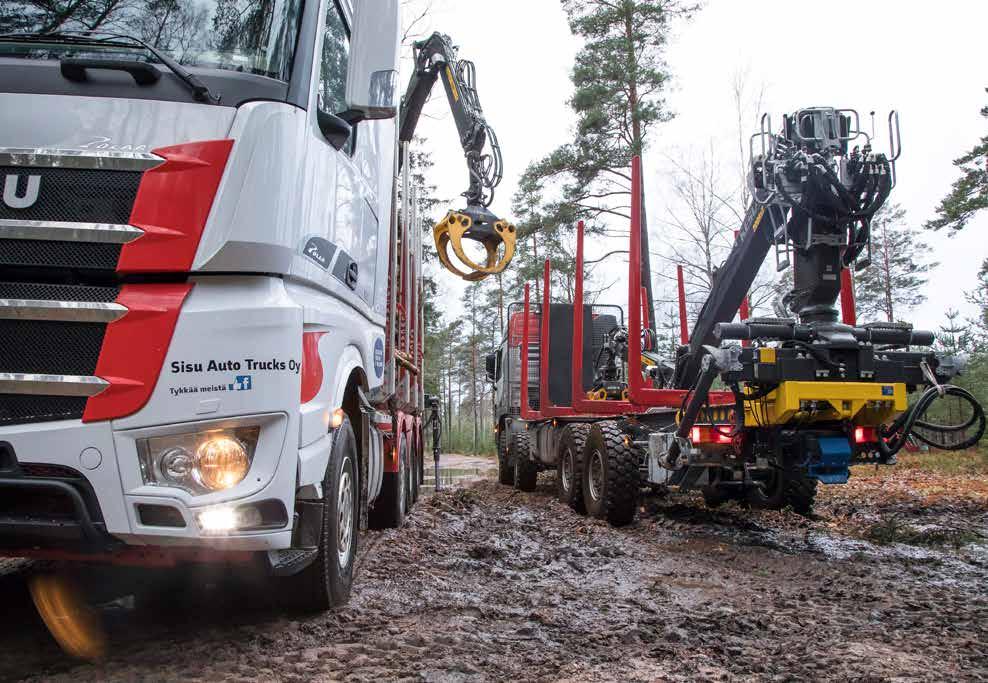
3 minute read
Hard worker in harsh conditions
Rapidly growing e-commerce increases demand for packaging board in Russia. Timber is moving and the pulp mills are spinning. In order to get the timber moving, the country needs Kesla’s legendary timber handling cranes.
‘Legendary’ is exactly the right word to describe the KESLA 2009S product family. This is a 9 tonne-metre class timber handling crane, which is descended from a timber handling crane that impressed the market under the Forester brand. The first Foresters entered the market in the 1980s. Built for expediency, these beasts of burden proved superior to their competitors. In the brand reform of 2005, the Forester brand was discontinued. The change of name did not undermine customers’ confidence, as the timber handling crane had already demonstrated its excellent functionality and reliability at Russia’s extremely challenging logging sites.
In the arms of Siberia
The most demanding of harvesting locations are in Siberia. Timber is harvested in winter, when the temperature may well be under -40°C. “Special liquids and oils, special hoses and, of course, the way of using the machines,” says Artur Ihno, who was Kesla’s regional manager until 2020, listing the special requirements related to the use of the crane. In practice, the machines run around the clock – in harsh freezing conditions, the engines are not switched off even during an hour’s break. Experience has shown that this is the best way to keep the machines operational. Ihno also explains the importance of the durability and reliability requirement in terms of distance.
Kesla has its own importer in St Petersburg, which organises servicing and spare parts service. According to Ihno, practically every major customer has a spare parts and service point next door. Kesla also has close cooperation with the car brands that manufacture base machines. Partners include Volvo, Mercedes, MAN, Scania, KAMAZ and MAZ.
Growth on the horizon
Russia is an important export country for Kesla. Each year 150 to 200 timber handling cranes are exported to the country. Customers range from small private logging companies to giants like the Ilim Group. The largest wood processing company in Russia, Ilim Group, produces about 3.2 million tonnes of paper and pulp per year. Half-owned by Russian Ilim Holding and American International Paper, Ilim is planning to make significant factory investments in Russia in the coming years. “Ilim has several large plants, where about 50 Kesla timber handling cranes are continuously at work throughout the harvesting season. The winter season 2019–2020 was mild and challenging in regard to stands marked for cutting. However, the short harvesting season was preceded by a few good winters.” “The previous winter was short for harvesting, but the price of timber was good. Last winter, on the other hand, was more problematic, as the price of timber was falling. However, people in Russia don’t seem to be concerned about weather fluctuations, let alone climate change. They say that the fluctuations are normal and that we’ll soon have a decent cold winter again.”
Expedient
Russians appreciate the expediency of KESLA 2009S and KESLA 2009ST timber handling cranes. There is nothing extra in the cranes, no frills at all. At its simplest, the crane has lever control and top seat equipment. Around 70% of the sales are machines with top seat equipment. Customers mostly only buy cabin cranes for Siberia.
In Siberia, the driver is subjected to the lowest temperatures, but you would think that poor weather conditions would affect drivers elsewhere as well. Here, Russians joke about the speed of work: they say that a driver with top seat equipment works faster without the comfort or protection from the elements provided by a cabin.










